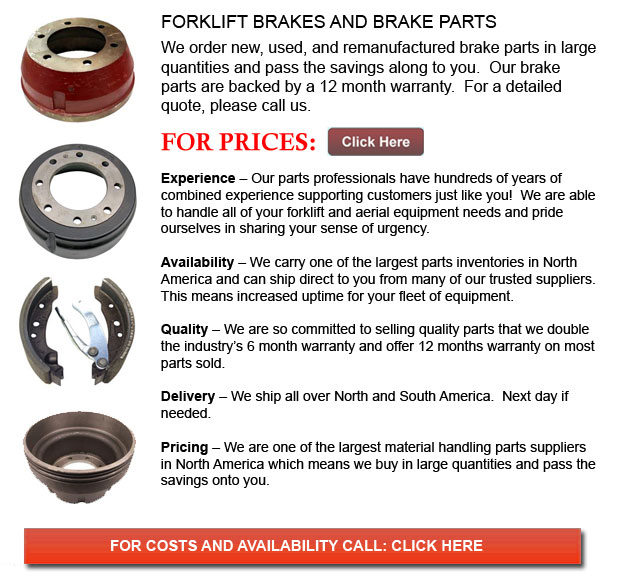
Forklift Brakes - A brake drum is where the friction is supplied by the brake pads or brake shoes. The shoes or pads press up against the rotating brake drum. There are some other brake drums kinds together with particular specific differences. A "break drum" would usually refer to when either pads or shoes press onto the inner exterior of the drum. A "clasp brake" is the term utilized to describe whenever shoes press next to the outside of the drum. One more kind of brake, referred to as a "band brake" uses a flexible band or belt to wrap around the exterior of the drum. Where the drum is pinched in between two shoes, it can be called a "pinch brake drum." Like a standard disc brake, these types of brakes are somewhat uncommon.
Before nineteen ninety five, early brake drums needed consistent modification regularly to be able to compensate for shoe and drum wear. "Low pedal" or long brake pedal travel is the dangerous outcome if adjustments are not carried out sufficiently. The vehicle can become hazardous and the brakes could become useless whenever low pedal is mixed together with brake fade.
There are various Self Adjusting Brake Systems presented, and they can be categorized within two main kinds, RAD and RAI. RAI systems have inbuilt tools which avoid the systems to recover when the brake is overheating. The most popular RAI manufacturers are Bendix, Lucas, Bosch and AP. The most well-known RAD systems include AP, Bendix, Ford recovery systems and Volkswagen, VAG.
The self adjusting brake will normally only engage when the vehicle is reversing into a stop. This method of stopping is acceptable for use where all wheels use brake drums. Disc brakes are used on the front wheels of vehicles nowadays. By functioning only in reverse it is less possible that the brakes will be applied while hot and the brake drums are expanded. If adjusted while hot, "dragging brakes" could occur, which raises fuel intake and accelerates wear. A ratchet tool that becomes engaged as the hand brake is set is another way the self repositioning brakes can work. This means is just suitable in applications where rear brake drums are utilized. When the emergency or parking brake actuator lever goes over a particular amount of travel, the ratchet advances an adjuster screw and the brake shoes move in the direction of the drum.
There is a manual adjustment knob situated at the bottom of the drum. It is typically adjusted via a hole on the opposite side of the wheel and this involves getting under the lift truck together with a flathead screwdriver. It is of utmost importance to move the click wheel properly and tweak each and every wheel evenly. If unequal adjustment occurs, the vehicle may pull to one side during heavy braking. The most effective way to be able to ensure this tiresome job is accomplished carefully is to either lift each wheel off the ground and spin it manually while measuring how much force it takes and feeling if the shoes are dragging, or give everyeach and every one the same amount of manual clicks and then perform a road test.
![]() Click to Download the pdf
Click to Download the pdf
Forklift Parts
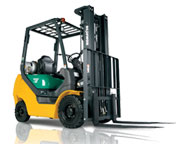
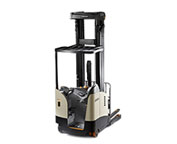
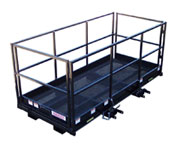
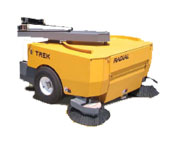
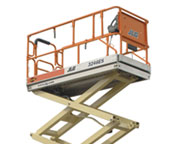
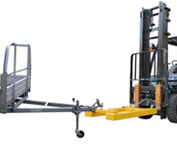
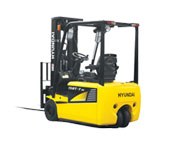
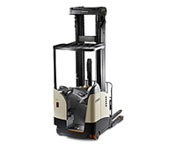
Lift Parts Express
TOLL FREE: 1-888-695-7994
forkliftpartsvermont.com
Email Us
About Us


